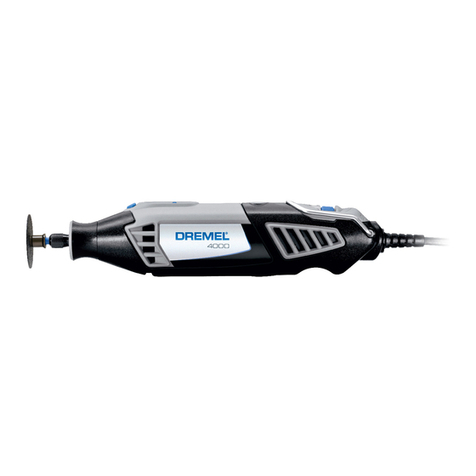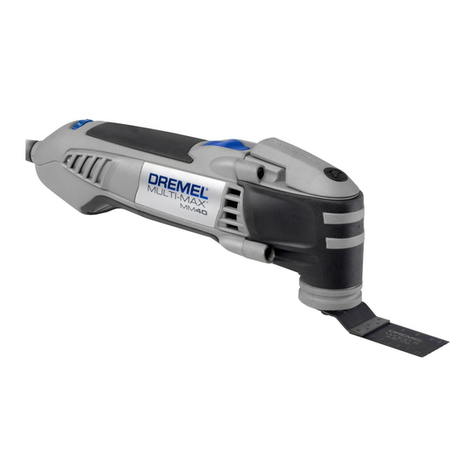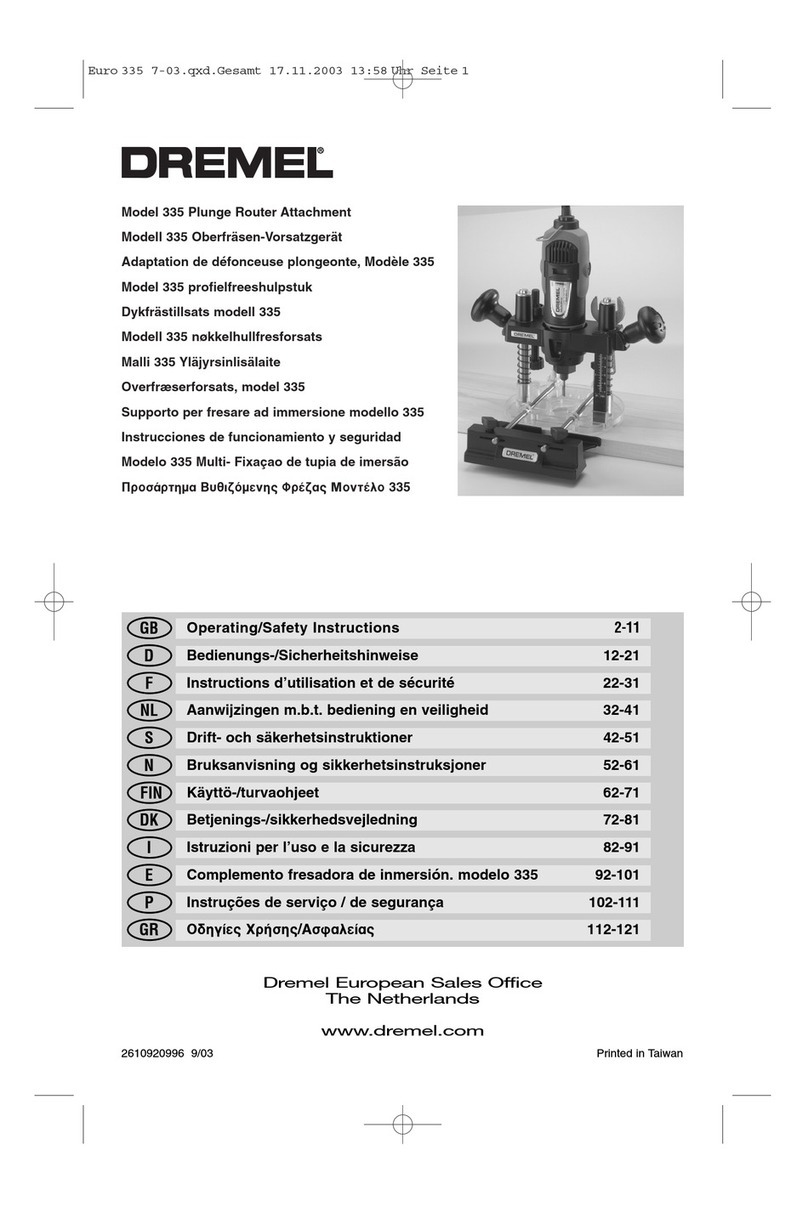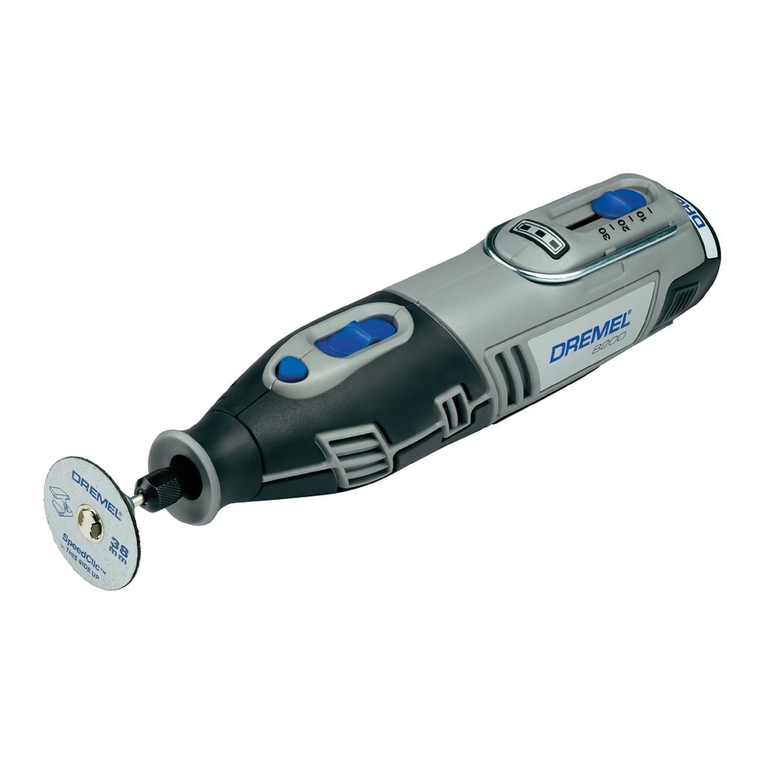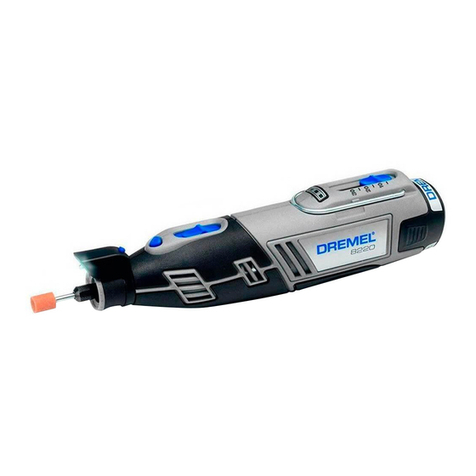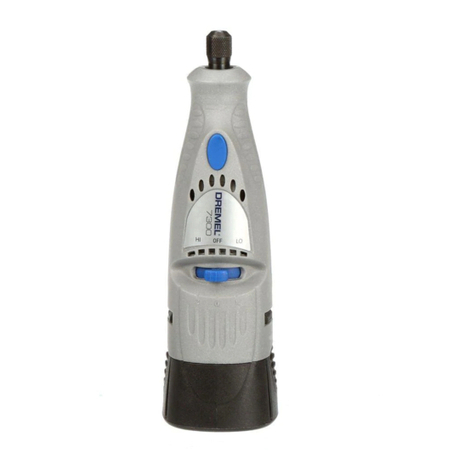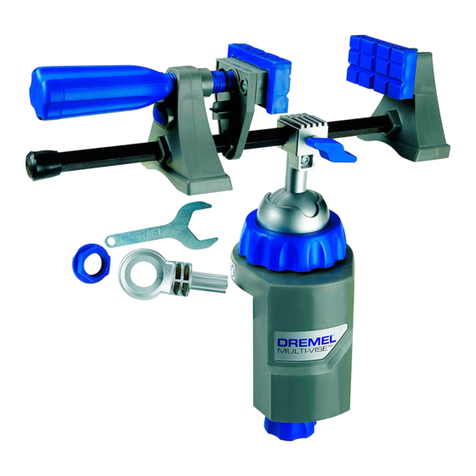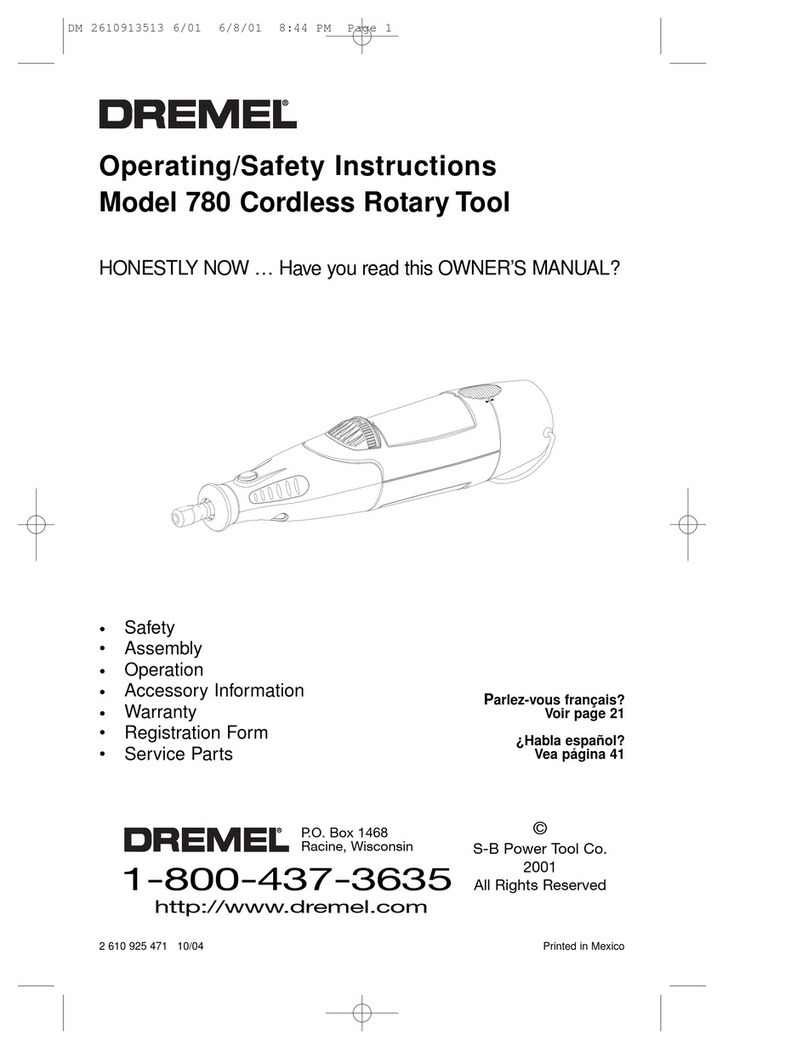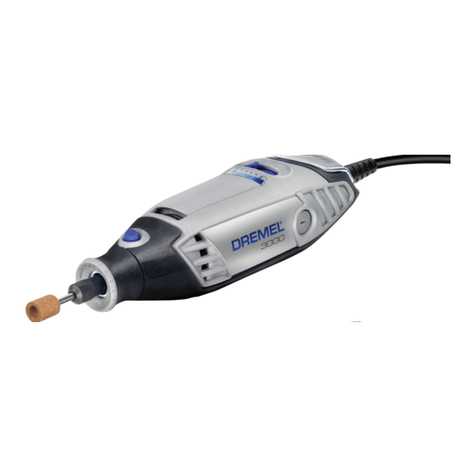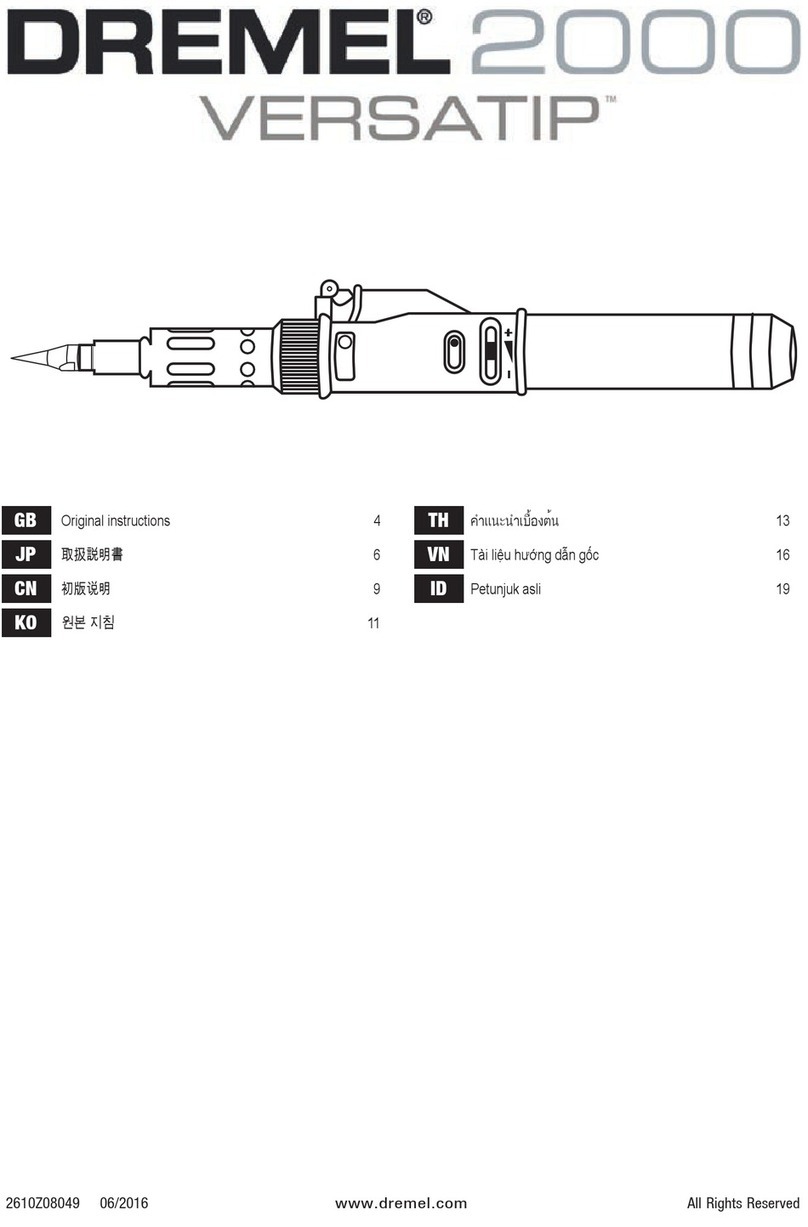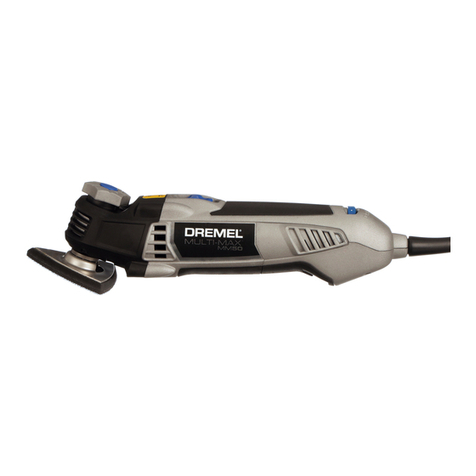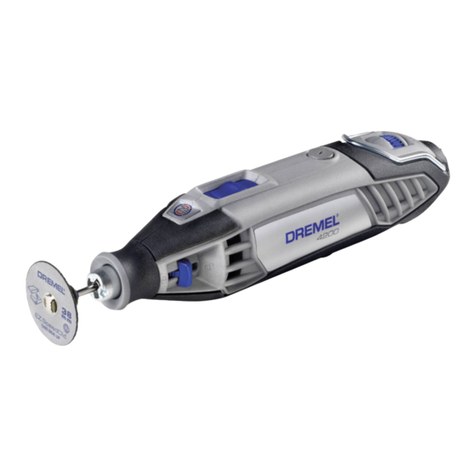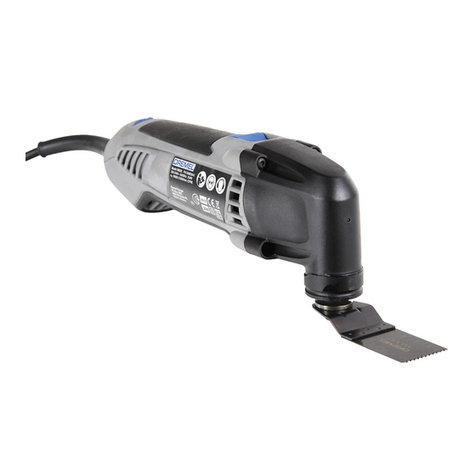4
Safety Rules for Cordless Rotary Tools
Use clamps or another practical way to secure and
support the workpiece to a stable platform. Holding
the work by your h nd or g inst the body le ves it
unst ble nd m y le d to loss of control.
Accessories must be rated for at least the speed
recommended on the tool warning label. Wheels
nd other ccessories running over r ted speed c n
fly p rt nd c use injury.
If cutting into existing walls or other blind areas
where electrical wiring may exist is unavoidable,
disconnect all fuses or circuit breakers feeding this
worksite.
Before changing accessories remove battery pack.
Accident l st rting m y occur bec use b ttery tools
with b ttery inserted re in the oper tive condition.
Be aware of the switch location, when placing the
tool down or when picking the tool up. You m y cci-
dent lly ctiv te the switch.
Always hold the tool with two hands during a start-up.
The re ction torque of the motor c n c use the tool to
twist.
Always wear safety goggles and dust mask. Use
only in well ventilated area. Using person l s fety
devices nd working in s fe environment reduces risk
of injury.
After changing the bits or making any adjustments,
make sure the collet nut and any other adjustment
devices are securely tightened. Loose djustment
device c n unexpectedly shift, c using loss of control,
loose rot ting components will be violently thrown.
Do not reach in the area of the spinning bit. The
proximity of the spinning bit to your h nd m y not
lw ys be obvious.
Allow brushes to run at opera ting speed for at least
one minute before using wheel. During this time no
one is to stand in front or in line with the brush.
Loose bristles or wires will be disch rged during the
run-in time.
ire and bristle brushes must never be operated at
speeds greater than 15,000/min. Direct the dis-
charge of the spinning wire brush away from you.
Sm ll p rticles nd tiny wire fr gments m y be dis-
ch rged t high velocity during the “cle ning” ction
with these brushes nd m y become imbedded in
your skin. Bristles or wires will be disch rged from
the brush t high speeds.
" ear protective gloves and face shield with wire or
bristle brushes. Apply wire or bristle brushes light-
ly to the work as only the tips of the wire/bristles do
the work. “He vy” pressure on bristles will c use the
wire or bristle to become overstressed, resulting in
wiping ction nd will c use the bristles/wire to be
disch rged."
Carefully handle both the tool and individual grind-
ing wheels to avoid chipping or cracking. Install a
new wheel if tool is dropped while grinding. Do not
use a wheel that may be damaged. Fr gments from
wheel th t bursts during oper tion will fly w y t
gre t velocity possibly striking you or byst nders.
Never use dull or damaged bits. Sharp bits must be
handled with care. D m ged bits c n sn p during
use. Dull bits require more force to push the tool,
possibly c using the bit to bre k.
Use clamps to support workpiece whenever practi-
cal. Never hold a small workpiece in one hand and
the tool in the other hand while in use. Allow for
sufficient space, at least 6", between your hand and
the spinning bit. Round m teri l such s dowel rods,
pipes or tubing h ve tendency to roll while being
cut, nd m y c use the bit to “bite” or jump tow rd
you. Cl mping sm ll workpiece llows you to use
both h nds to control the tool.
Inspect your workpiece before cutting. hen cutting
irregularly shaped workpieces, plan your work so it
will not slip and pinch the bit and be torn from your
hand. For ex mple, if c rving wood, m ke sure there
re no n ils or foreign objects in the workpiece. N ils
or foreign objects c n c use the bit to jump.
